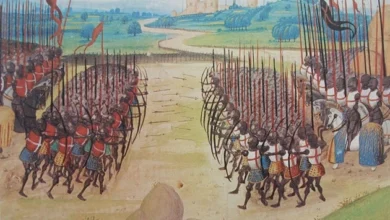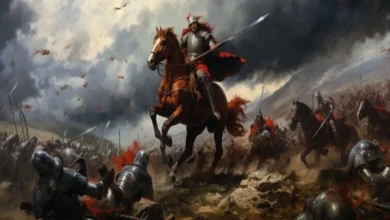The secret of Oasisamerica: what the secret lands between Mexico and America hide

The majority of people are completely unfamiliar with the concept of Oasisamerica. This strange region can be found between the territories of Mexico and the United States. The word has only been around for a short while, and it’s interesting to note that the location hides some secrets. It was widely believed that the end of the world would occur in 1695, a year in history that was otherwise uneventful and comparable to any other year. In some parts of the world, wars and tyrants were still being conceived, but in this part of the planet, the end of the world was not an unreasonable expectation. What motivated the ancients and what happened in the end – find out in the article.
Why Oasisamerica?
There is nothing particularly remarkable about sitting about and waiting for the world’s end. In the end, many different cultures hold beliefs that are very similar to one another regarding the day that the world will come to an end. In this specific example, the geographical aspect is the deciding factor because Oasisamerica is a relatively new word. Paul Kirchhoff, a German philosopher, ethnologist, and anthropologist, is credited with coming up with the term. His entire life was committed to researching Native American communities and peoples.
He researched archaeological finds in Mexico, Guatemala, El Salvador, Belize, Honduras, Nicaragua, and Costa Rica. Throughout his work, he was able to identify various aspects of shared culture. Later, the expert added two more cultural areas to the conceptual vocabulary. These were Aridoamerica and Oasisamerica. Aridoamerica includes southern Mexico and western Central America, and Oasisamerica covers the rest of the Americas.
Archaeologists from the United States of America often refer to Oasisamerica as the Great Southwest. It is an area that may be found in North America and runs from the Rocky Mountains to the Western Sierra Madre. To the west is the Gulf of California, and to the east is the Rio Grande Valley. Consequently, in the present-day southeastern territory of the United States (Arizona, Utah, New Mexico, Colorado, Nevada, and California), in addition to the northern part of Mexico (Chihuahua, Sonora, and Baja California).
As a part of the Aridoamericas, this fertile region is distinguished by its expansive plains that are arid. Rivers including the Yaqui, Colorado, Casas Grandes, Gila, and Mayo contribute a significant amount of water to the region’s overall irrigation system. In addition to that, there were a great number of lakes. Some of them have been extinct for a very long time, but most of them are still around today. As a result, farming was very successful in this region, and people were happy to make their homes here despite the challenging weather.
Agriculture in the Mesoamerican region
The natives engaged in extensive commercial activity with the Mesoamericans. At that time, turquoise was quite valuable, and it was used to decorate various high-end objects. In exchange, the people were given the seeds of a variety of crops as well as instructions on how to cultivate them. The excavations at Paquimé are proof of the strong link between these two cultures. It is a region near Casas Grandes, Chihuahua, home to several clay constructions that were constructed between the 8th and 15th centuries AD. This location has yielded a significant number of artifacts. There are skeletons of tropical birds from the Yucatan jungle and various ceremonial artifacts from Mesoamerican religions. Some of these objects are from Mesoamerica.
Only two millennia after the original break of Mesoamerica and Aridoamerica, the historical chronology of Oasisamerica is considered to have begun. Corn remains that have been dated lend credibility to this scientific theory.
How long the mysterious land has been

10-12years ago, the area was inhabited for the first time by a population whom archaeologists refer to as Paleo-Indians. According to the findings of archaeological digs, their only activities, in the beginning, consisted of hunting and fishing. After some time, people started engaging in agricultural practices, and most of what they grew was maize, beans, and pumpkins. They made their homes by carving dwellings out of rocks or settling in caves. The Anasazi, the Hohokam, and the Mogollón were the three primary cultures that established permanent settlements in what is now known as Oasisamerica.
The region around the Four Corners was home to the earliest, most northern pueblos, which have since been renamed the Ancestral Pueblos. The fact that the states of Utah, Arizona, Colorado, and New Mexico converged here inspired the naming of the region. Juniper has been abundant in these regions since prehistoric times, and the pueblos that exist now descended from people who lived here thousands of years ago. These Native Americans belonged to the Zuni, Hopi, Tiwa, and Navajo tribes. Before the Spanish conquest in the middle of the 16th century, the region enjoyed a high level of prosperity.
Decline due to division
The Anasazi were known for their outstanding architecture and pottery, both of which are examples of their artistry. They constructed homes of stone, some of which had as many as five stories. All the villages were constructed on the cliffs, which proved to be a great defensive strategy and allowed for installing highly sophisticated irrigation systems. Its collapse was brought on by the region’s persistent lack of rainfall. The fact that the various tribes lived too far apart was a contributing factor that made the problem even worse. They had significant cultural and racial differences, and this ultimately worked out to the advantage of the people who conquered the land.
The Spanish termed the region the Hohokam called Pimera Alta. It is located south of the Sonoran Desert and is bounded on the east by the Gila River and the Colorado River. Due to the harsh conditions of their environment, which included a lack of rainfall and extreme temperatures, these people were compelled to construct an enormous irrigation system to direct the flow of the riverbeds. This allowed them to cultivate and produce two crops each year. It is unknown if their culture originated locally or was the product of migrations from other south areas; however, it emerged during the third and fourth centuries BC and maintained trade links with Mesoamerica. Their communities were far less extensive than those of the Anasazi, and they were frequently constructed partially underground. In this part of the world, it was an excellent way to cool off throughout the day.
The region known as Mogollon, which spans the border between Arizona and New Mexico, was Oasisamerica’s most southernmost territory. The chronology of its history is not entirely clear, as it is typically separated into two primary phases: the early (which spans 500 BC to 1000 AD) and the late (until about AD 1540). The Mogollonians achieved the pinnacle of their grandeur during the Late Period due to trade with Mesoamerica and the influence of the Anasazi. They tried to replicate their architectural style. Most of this blossoming was concentrated in the area home to the Paquime culture, which some people consider to be an entirely distinct territory located in the Western Sierra Madre. Casa Grande is the most populated city in this area.

Later on, Mogollonians and Anasazi people began to intermarry. Their legacy lives on in the colourful pottery they created and the archaeological ruins that may be found in the Gila Desert, the Mimbres River Valley, and the reservoirs of Hueco. These locations are all located in New Mexico. Instead of the more common geometric patterns, all of their items had figurative designs as the primary mode of decoration.
Why 1695?
In addition to these three big cultures, there are also three more that are not as established. These communities included Fremont, Utah’s villages and portions of Nevada, Idaho, and Colorado. They are occasionally counted as Anasazi due to a counting error. Long before the first Spaniards arrived in the Americas, the oasis that the American peoples called home began to decline. It’s possible that by the time they reached this final phase, they were under the impression that the end of their planet would occur on a specific date that, according to the Gregorian calendar, corresponds to the year 1695. Quite a remarkable coincidence. After all, this was the same year that the great uprising in Arizona that was fought against the power of Carlos II in the viceroyalty of New Spain took place in Arizona. The Indians had previously rebelled, but this was the bloodiest.
The Spaniards took over more and more land that the indigenous people traditionally held. After establishing themselves here, settlers began engaging in mining and cattle ranching businesses. The locals had a negative reaction to all of this information. Dissatisfaction built up for several years. Evangelism was met with a great deal of hostility from the Indians. The priests frequently paid the price, and they were either put to death or sold into slavery. As a direct consequence, the Spanish government’s repression became increasingly harsh.
By the time the alleged end of the world arrived, the area was already in the midst of a horrible and violent war. Many native people were either put to death or forced to flee to other tribes. As a direct consequence, Oasisamerica entered the new century with a large population decline but a mostly stable political climate. The authorities of the viceroyalty adjusted their practices, and this marked the beginning of both rapprochement and the public’s participation in the legal defence of Native Americans in court. The practice of forcibly converting people to Christianity was discontinued, but all forms of paganism continued to be outlawed.
As time went on, there was a succession of new rulers. The laws were loosened, and then they tightened again. As a result, the region was periodically rattled by uprisings. Perhaps the end of the world as we know it in a more general sense did not occur, but the golden age has passed us by. At this point, nothing remains to save ancient ruins, archaeological artifacts, and historical documents.




